Unlock critical information in unstructured data with entity extraction in NLP
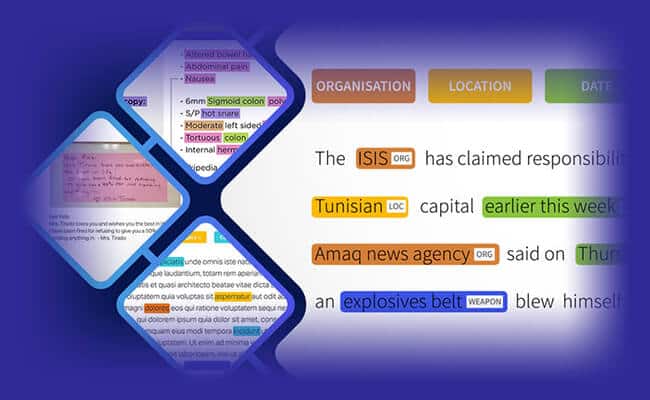
Empowering teams to build world-leading AI products.

Looking at the speed at which the data is generated; of which 80% is unstructured, there is a need on ground to use next-gen technologies to analyze the data effectively and gain meaningful insights for making better decisions. Named Entity Recognition (NER) in NLP primarily focuses on processing unstructured data and classifying these named entities into predefined categories, thereby converting unstructured data into structured data that can be used for downstream analysis.
The worldwide installed base of storage capacity will reach 11.7 zettabytes in 2023
80% of the data around the world is unstructured, making it obsolete and unusable.
Named Entity Recognition (NER), identifies and classifies entities such as people, organizations, and locations within unstructured text. NER enhances data extraction, simplifies information retrieval, and powers advanced AI applications, making it a vital tool for businesses to leverage. With NER, organizations can gain valuable insights, improve customer experiences, and streamline processes.
Shaip NER is designed to allow organizations to unlock critical information in unstructured data & lets you discover relationships among entities from financial statements, insurance documents, reviews, physician notes, etc. NER can also help identify relationships among entities of the same type, such as multiple organizations or individuals mentioned in a document, which is important for consistency in entity tagging and improving model accuracy. With rich experience in NLP & linguistics, we are well equipped to deliver domain-specific insights to handle annotation projects of any scale.
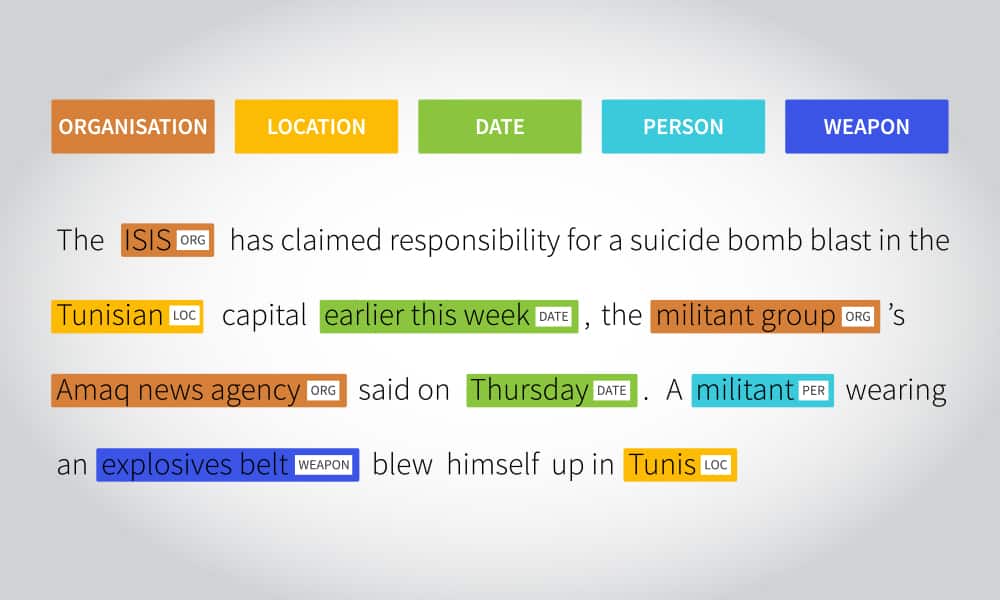
The primary goal of a NER model is to label or tag entities in text documents and categorize them for deep learning. Deep learning models and other machine learning models are commonly used for NER tasks, as they can automatically learn features from text and improve accuracy. General purpose models, which are trained on broad corpora such as news and web text, may need adaptation to perform accurately in domain-specific NER tasks. The following three approaches are generally used for this purpose. However, you can choose to combine one or more methods as well. The different approaches to creating NER systems are:
This is perhaps the most simple and fundamental NER approach. It will use a dictionary with many words, synonyms, and vocabulary collection. The system will check whether a particular entity present in the text is also available in the vocabulary. By using a string-matching algorithm, a cross-checking of entities is performed. There is a need for constantly upgrading the vocabulary dataset for the effective functioning of NER model.
Rule based methods rely on predefined rules to identify entities in text. These systems use a set of pre-set rules, which are
Pattern-based rules – As the name suggests, a pattern-based rule follows a morphological pattern or string of words used in the doc.
Context-based rules – Context-based rules depend on the meaning or the context of the word in the document.
In Machine learning-based systems, statistical modeling is used to detect entities. A feature-based representation of the text document is used in this approach. You can overcome several drawbacks of the first two approaches since the model can recognize entity types despite slight variations in their spellings for deep learning. Additionally, you can train a custom model for domain-specific NER, and it is important to fine-tune the model to improve accuracy and adapt to new data.
Sentiment Analysis
NER annotation process generally differs to a client’s requirement but it majorly involves:
Phase 1: Technical domain expertise (Understanding project scope & annotation guidelines)
Phase 2: Training appropriate resources for the project
Phase 3: Feedback cycle and QA of the annotated documents
Named Entity Recognition in Machine Learning is a part of Natural Language Processing. The primary objective of NER is to process structured and unstructured data and classify these named entities into predefined categories. Some common categories include name, person entity, location, company, time, monetary values, events, and more.
1.1 General Domain
Identification of people, place, organization etc. in the general domain
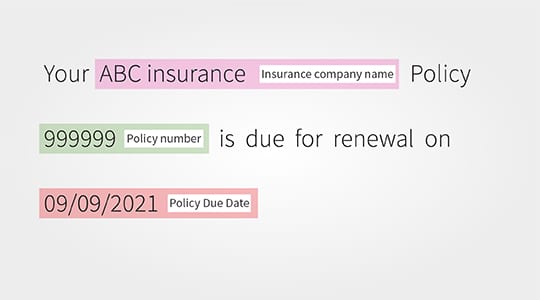
1.2 Insurance Domain
It involves extraction of entities in insurance documents such as
1.3 Clinical Domain / Medical NER
Identification of problem, anatomical structure, medicine, procedure from medical records such as EHRs; are usually unstructured in nature and require additional processing to extract structured information. This is often complex and requires domain experts from healthcare to extract relevant entities.

It identifies a discrete noun phrase in a text. A noun phrase may be either simple (e.g. single head word like noun, proper noun or pronoun) or complex (e.g. a noun phrase that has a head word along with its associated modifiers)
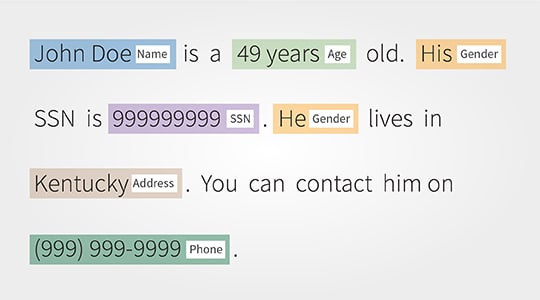
PII refers to Personally Identifiable Information. This task involves annotation of any key identifiers which can relate back to a person’s identity.
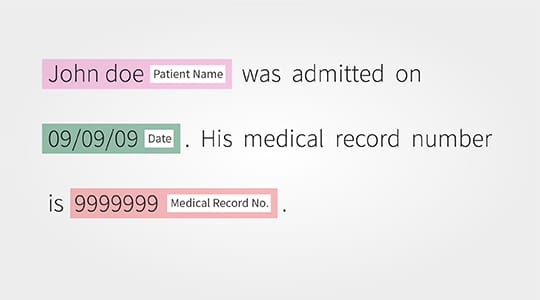
PHI refers to Protected Health Information. This task involves annotation of 18 key patient identifiers as identified under HIPAA, in order to de-identify a patient record/identity.
Identification of information like who, what, when, where about an event e.g. Attack, kidnapping, Investment etc. This annotation process has following steps:
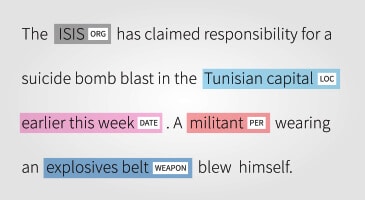
5.1. Entity Identification (e.g. Person, place, organization, etc.
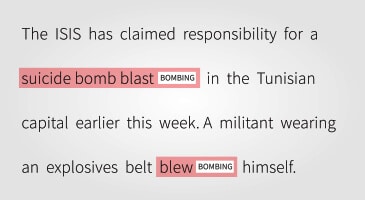
5.2. Identification of word denoting the main incident (i.e. trigger word)
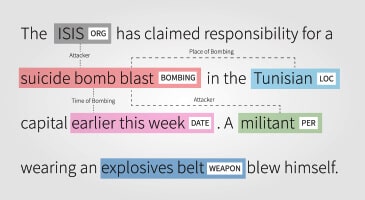
5.3. Identification of relation between a trigger and entity types
It is estimated that data scientists spend over 80% of their time in data preparation. By coordinating multiple annotators to ensure consistency and quality in annotation projects, outsourcing allows your team to focus on the development of robust algorithms, leaving the tedious part of collecting the named entity recognition datasets to us.
An average ML model would require collection and tagging large chunks of named datasets, which requires companies to pull in resources from other teams. Scaling annotation efforts across multiple data types, such as text, images, and audio, can be challenging. With partners like us, we offer domain experts which can be easily scaled as your business grows.
Dedicated domain experts, who annotate day-in and day-out will – any day – do a superior job when compared to a team, that needs to accommodate annotation tasks in their busy schedules. Needless to say, it results in better output, leading to more accurate predictions from NER models.
Our proven data quality assurance process, technology validations, and multiple stages of QA help us deliver best-in-class quality, often exceeding expectations by delivering annotated data in a structured format to facilitate downstream processing.
We are certified for maintaining the highest standards of data security with privacy while working with our clients to ensure confidentiality
As experts in curating, training, and managing teams of skilled workers, we can ensure projects are delivered within budget.
High network up-time & on-time delivery of data, services & solutions.
With a pool of onshore & offshore resources, we can build and scale teams as required for various use cases.
With the combination of a global workforce, robust platform, & operational processes designed by 6 sigma black-belts, Shaip helps launch the most challenging AI initiatives.
Named Entity Recognition (NER) helps you develop top-notch machine learning & NLP models. Learn NER use-cases, examples, & a lot more in this super-informative post.
80% of data in the healthcare domain is unstructured, making it inaccessible. Accessing the data requires significant manual intervention, which limits the quantity of usable data.
Text annotation in machine learning refers to adding metadata or labels to raw textual data to create structured datasets for training, evaluating, and improving machine learning models.
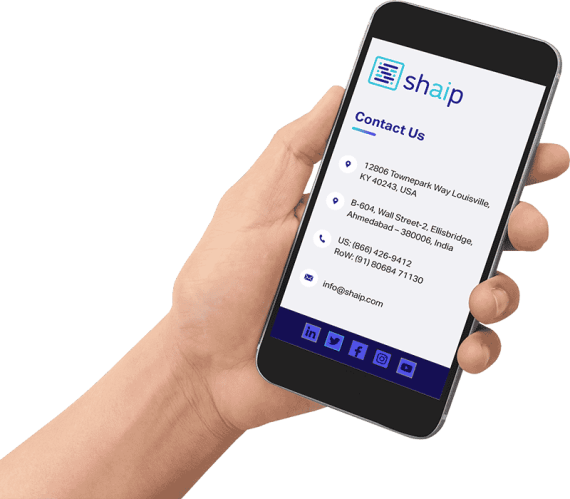
Contact us now to learn how we can collect a custom NER dataset for your unique AI/ML solution